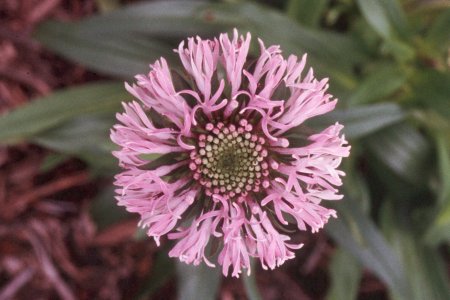Flowers
Many options exist to turn your decorative garden into a feast for native birds, insects, and other animals. Choose the original native over the cultivar.
Birds love wild columbine (Aquilegia canadensis), a perennial with orange and red flowers that bloom in spring.
Bees, butterflies and hummingbirds love bee balm (Monarda didyma), a perennial that blooms with red flowers from July through August. For more summer color, plant cone flowers (Echinacea purpura).
Pollinators need support through late summer and fall, so plant great blue lobelia (Lobelia siphilitica), Black-eyed Susans, goldenrods, and New England asters. If you’d like to plant a complete pollinator garden, Xerces Society has a great guide.
Marshallton’s special native flower
Marshallia grandiflora, commonly known as Barbara’s Buttons, is named for Humphry Marshall and his nephew Moses. Humphry Marshall is the namesake of West Bradford Township’s own Marshallton Village.
Barbara’s Buttons (Marshallia grandiflora) is classified as endangered in Pennsylvania because of the destruction of the flooded plains needed to keep down the grasses that compete with it. In June and July, Barbara’s Buttons produces tiny, tubular florets in solitary, terminal flower heads on stems up to 18" high from basal rosettes of deep green leaves. It is a native American plant found along streams and in clearings in Central Appalachia from Pennsylvania to Tennessee and prefers moist or mesic soils in full or part sun. The genus name honors Pennsylvania botanists Humphry and Moses Marshall, uncle and nephew. The origin of the common name of the genus is unclear, but may be a reference to St. Barbara. (Missouri Botanical Garden).


